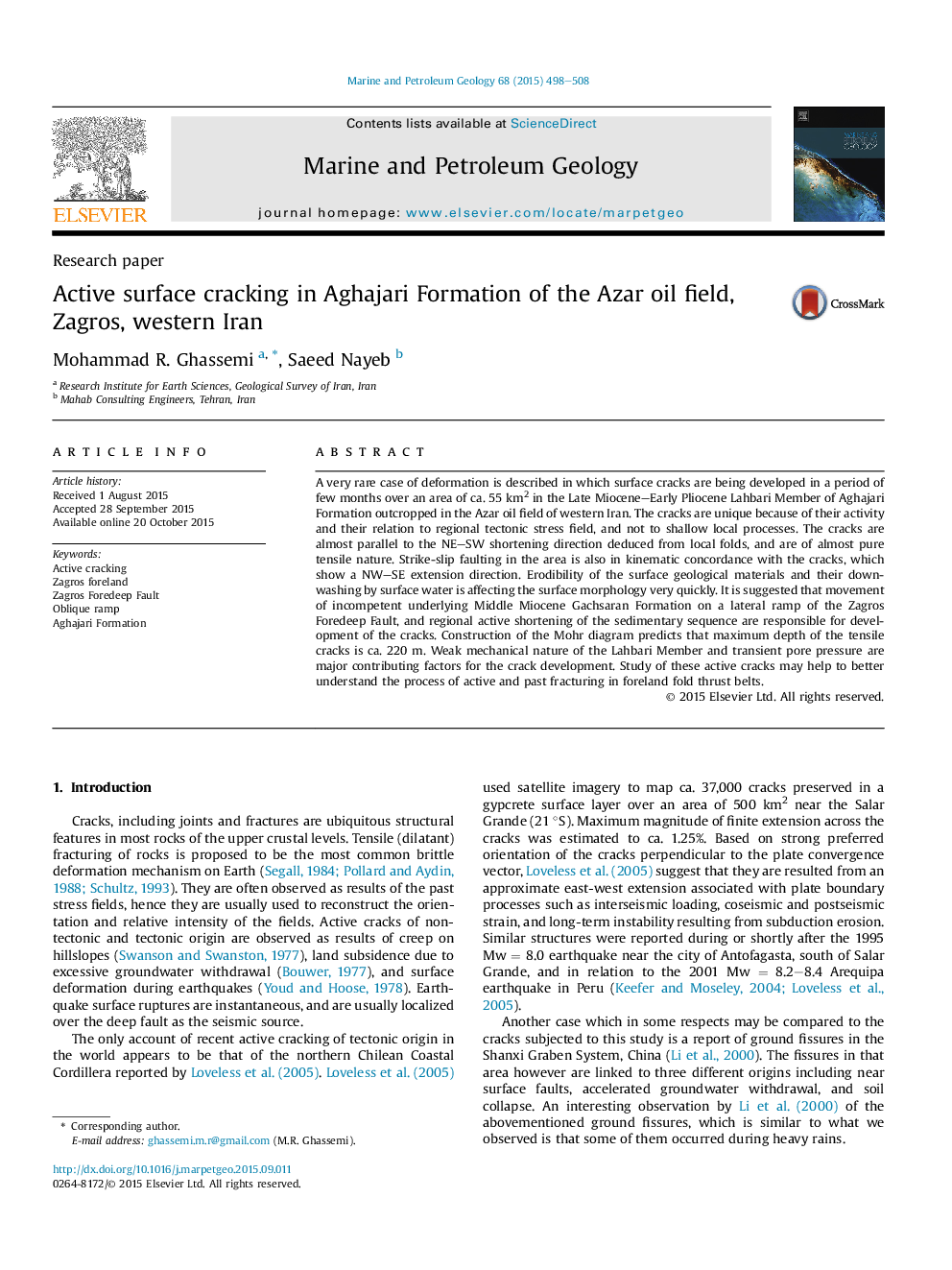| کد مقاله | کد نشریه | سال انتشار | مقاله انگلیسی | نسخه تمام متن |
|---|---|---|---|---|
| 6435115 | 1351611 | 2015 | 11 صفحه PDF | دانلود رایگان |
- Active surface cracks have developed in a short period of time in the Azar oil field of Zagros.
- The cracks are in close relationship with active local tectonic stress field.
- Movement of the Gachsaran Formation over an oblique ramp is suggested to be responsible for crack development.
- Maximum depth of the crack formation is estimated to ca. 220Â m.
A very rare case of deformation is described in which surface cracks are being developed in a period of few months over an area of ca. 55Â km2 in the Late Miocene-Early Pliocene Lahbari Member of Aghajari Formation outcropped in the Azar oil field of western Iran. The cracks are unique because of their activity and their relation to regional tectonic stress field, and not to shallow local processes. The cracks are almost parallel to the NE-SW shortening direction deduced from local folds, and are of almost pure tensile nature. Strike-slip faulting in the area is also in kinematic concordance with the cracks, which show a NW-SE extension direction. Erodibility of the surface geological materials and their downwashing by surface water is affecting the surface morphology very quickly. It is suggested that movement of incompetent underlying Middle Miocene Gachsaran Formation on a lateral ramp of the Zagros Foredeep Fault, and regional active shortening of the sedimentary sequence are responsible for development of the cracks. Construction of the Mohr diagram predicts that maximum depth of the tensile cracks is ca. 220Â m. Weak mechanical nature of the Lahbari Member and transient pore pressure are major contributing factors for the crack development. Study of these active cracks may help to better understand the process of active and past fracturing in foreland fold thrust belts.
Journal: Marine and Petroleum Geology - Volume 68, Part A, December 2015, Pages 498-508
